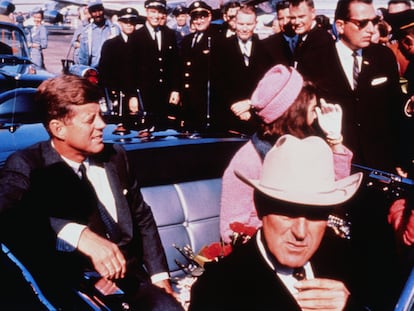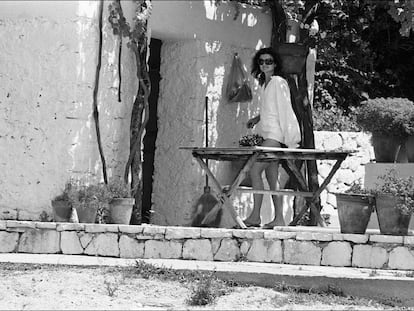Elegance, sex and nostalgia: Why John-John Kennedy continues to evoke fascination 25 years after his death
His images are all over social media and his style continues to inspire fashion in a world that no longer has anything to do with what he represented. A quarter-of-a-century after his passing, friends and experts remember the Kennedy heir
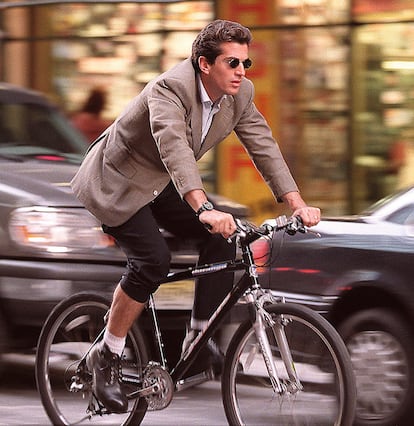
When John Fitzgerald Kennedy Jr. was asked, in March 1999, if he planned to run for mayor of New York City, he responded: “I can see myself lying on a beach and I can also see myself holding public office.” However, his political career ended before it could begin. Just four months later, on July 16, John-John (as he was known since childhood) and his wife, Carolyn Bessette-Kennedy, lost their lives in a plane crash off the coast of Martha’s Vineyard, an island in the state of Massachusetts. The “prince of Camelot” was 38-years-old and his consort was 33.
Former model Gigi Howard tells a story about Kennedy. One summer day, in the early 1990s, John and Gigi went to the beach with some friends in Southampton, a favorite spot for rich and famous New Yorkers. She went swimming and a huge wave knocked her over. “John came to rescue me,” she recalls, in conversation with EL PAÍS. “I lost a ring that my parents gave me when I turned 16. I tried my best not to cry. He first made sure I was okay. He was very empathetic. The next time I saw him at a dinner, he said to me: ‘I hope someone finds your ring and appreciates it as much as you do.’ He was a great person and a very down-to-earth man.”
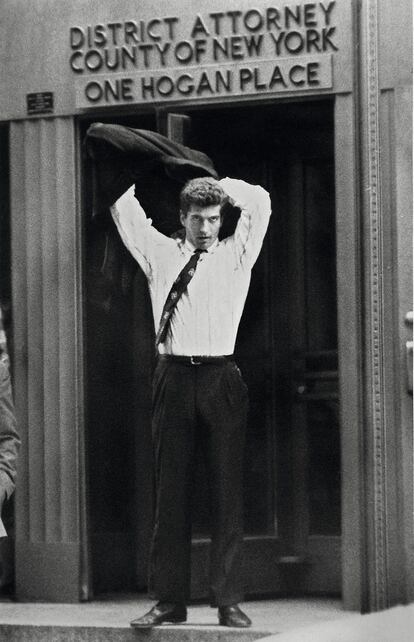
Howard doesn’t forget any of the moments she shared with John-John. “But I’m not obsessed with him,” she clarifies. “I honor him for being the wonderful person he was.” She may not be obsessed with Kennedy, but the rest of the world is. It’s been 25 years since his death, and his life and style continue to captivate the world. Social media is filled with old photographs of John in the prime of his youth: vibrant snapshots that show him riding a bicycle or skating through Central Park, playing Frisbee with his dog (a terrier named Friday), going sailing in Hyannis Port, or partying with Aleida Guevara — the daughter of Che Guevara — at fashion designer Anna Fendi’s house in Rome.
Fashion brands never seem to tire of these references. One of this season’s viral garments, for example, is a t-shirt designed by Jonathan Anderson for Loewe that reads “I told ya.” The design — worn by Zendaya and Josh O’Connor in Rivals, Luca Guadagnino’s latest film — is a nod to a t-shirt that John-John wore in the early-1990s. This phrase originates from the aftermath of his father’s 1960 presidential campaign, when the slogan “I told you so” was used by the Democratic Party, to commemorate the moment when Kennedy narrowly won the elections, beating Richard Nixon by just over 100,000 votes.
“When JFK Jr. was younger, in the ‘80s and ‘90s, there was kind of an effortlessness to his wardrobe — like he could wear anything and sex appeal would always be there,” Anderson explained to WWD a few months ago, when asked about the shirt. Gigi Howard also highlights the simplicity of John-John’s wardrobe. “It’s kindness and simplicity that makes someone elegant. There will never, ever be a more elegant and genuine couple than John and Carolyn,” she laments.
Kennedy and his wife — a former publicist for Calvin Klein — had no stylists or assistants. In his case, his wardrobe was an ode to the purest Americana: khaki pants, classic jeans, light blue linen or white cotton shirts, as well as an overwhelming collection of caps, beige Bermuda shorts and white t-shirts.
“His style was very sporty when he wasn’t at work or at a charity event. He often rode a bicycle [or rollerbladed], living as similarly to an ordinary New York City resident as possible. His [and Carolyn’s] style was simple, elegant and timeless,” explains journalist and writer Elizabeth Beller, who has just published Once Upon a Time (2024), a book in which she examines the life and death of Carolyn Bessette. Her style summed up the ideal of the late-1990s: a simple and practical monochrome elegance, which crossed minimalism with retro. She wore clothing made by designers like Narciso Rodríguez, Yohji Yamamoto, or her former employer, Calvin Klein. Today, social media continues to blow up every time someone posts a photo of the couple.
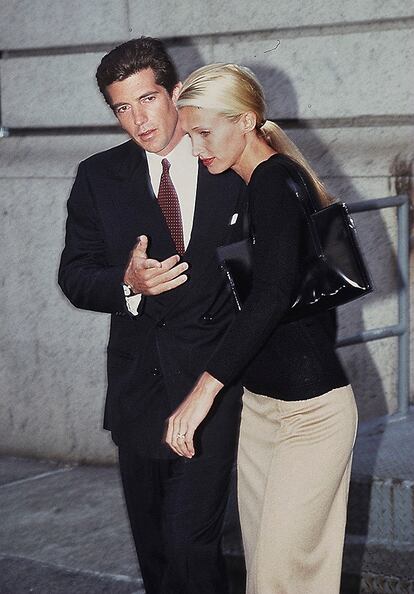
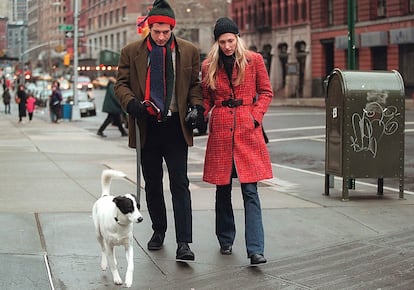
James Reginato, a reporter for Vanity Fair, never spoke to Kennedy Jr., but he remembers passing him on the streets of Manhattan. “In the 1980s and early-1990s, John was a very important part of New York. You could see him all over the city on his bike, running, skating, or at parties,” he tells EL PAÍS. “He was preppy and Waspy, but also sexy, because he was very handsome and comfortable with himself, [he was always] showing off his body. He liked to take off his shirt,” the journalist recalls. “Maybe he was a precursor to quiet luxury, since he was always very natural.”
But for Elizabeth Beller, John-John’s obsession with his image went beyond fashion sense. “He didn’t court the cameras. His moderation is very attractive in an era in which we’re saturated with selfies and images in general,” the writer explains. Reginato also believes that John-John continues to captivate us because he reminds us of a time without the internet and without mobile phones. “He was always very famous, but before 9/11 and social media, there wasn’t so much paranoia about security. People lived much more in the present, they weren’t on their phones all the time,” he says. The John-John phenomenon is associated with nostalgia, with a melancholy for a past that no longer exists.
Controversial pop culture writer Bob Colacello agrees. “John represents a lost America, a time before men dressed like convicts and women like whores, when manners and grooming were important, when political disagreements were civilized and Americans were proud of their country,” he grumbles. Colacello, 77, is one of the great chroniclers of New York high society and a former collaborator of Andy Warhol’s at Interview magazine. “It was — and still is — difficult to resist his movie-star looks and naturally athletic physique, whether he was riding a bike bare-chested, or rushing to a charity gala in a perfectly tailored tuxedo,” the tabloid journalist affirms.
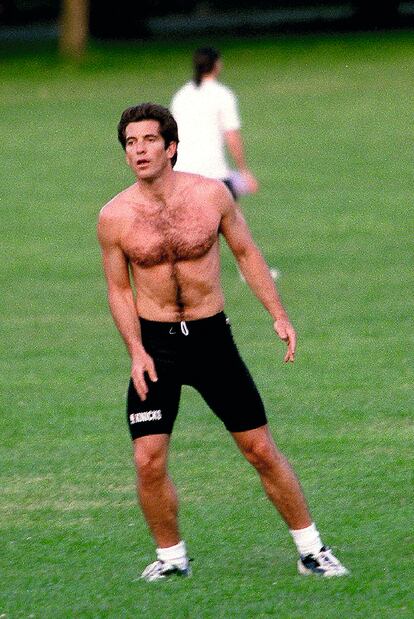
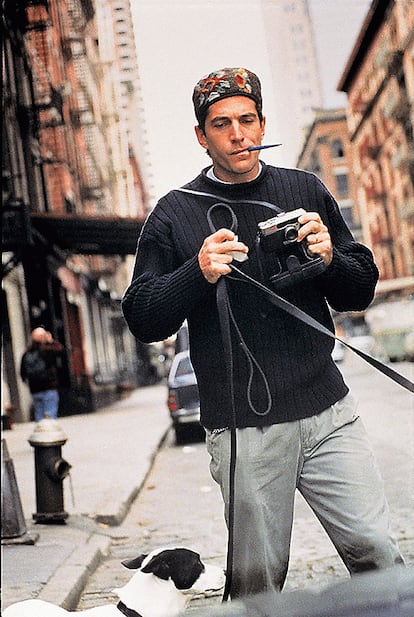
One of the most iconic images of John-John is a black-and-white photograph taken at a Vanity Fair party after the traditional dinner hosted by the White House Correspondents’ Association in May 1999. The snapshot shows the son of John F. Kennedy and Jackie Kennedy sitting on a sofa with his wife, Carolyn. He’s wearing a classic tuxedo, while she’s wearing a black Jean Paul Gaultier suit. They’re the embodiment of relaxed and simple elegance.
Jonathan Becker — a legendary photographer of high society — was the man who took the photo. “That may have been his last sitting. I just took a picture. We were introduced and John — who was the editor of George magazine — was already familiar with my work. We barely knew each other, but that was enough for him and Carolyn to feel comfortable in my presence. The plane crash killed them six weeks later, off the coast of his mother’s house on the island,” the photographer recalls. “By chance, the publication of the photograph coincided with his death. It was all very shocking.”
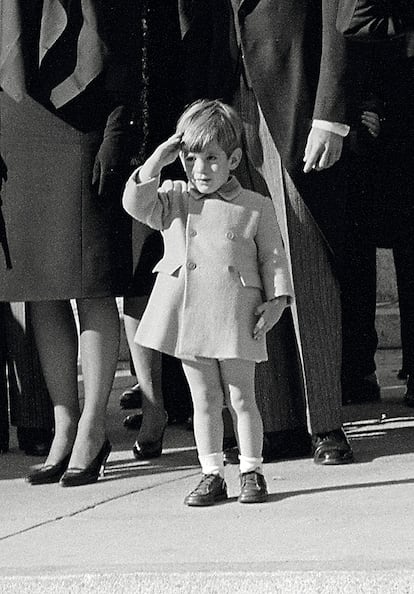
Becker refuses to call Kennedy “John-John” — “it sounds too intimate” — but he admits that we all feel a strange familiarity with that man and with that little boy in the coat who, in 1963, with childlike solemnity, greeted the coffin that was transporting his father’s body to Arlington National Cemetery. Becker attributes this to the influence that the Kennedy dynasty has had on the media. “[With] Ivy League degrees and manners, [dressed] in Ivy League clothes, they mastered the art of befriending the press — especially photographers — to create an American success narrative, a kind of Hollywood dream,” he reflects. “Social media may not have existed then, but the written press exerted a lasting, much more powerful influence. The family has perpetuated its own icons over generations. John was the youngest of those stars.”
Elizabeth Beller is convinced that, if John F. Kennedy Jr. hadn’t died on July 16, 1999, he would be in politics today. “He would have run for public office. His first campaign probably would have been for governor of New York,” she speculates. The author of Once Upon a Time can’t help but fantasize about what America would be like if John-John were alive. “Our country could have been very different. John and Carolyn’s lifestyle — dedicated to their family and friends and making positive changes in the world, while avoiding the celebrity spotlight — is something we could turn our attention to. Going back to that wouldn’t be a bad thing,” she sighs.
We’ll never know what would have happened. The legend of the handsome heir and his glamorous wife doesn’t fit into the reality of 2024. And while we know that their story was more complicated than perfect, we’re still left with all those idyllic photographs.
Sign up for our weekly newsletter to get more English-language news coverage from EL PAÍS USA Edition
Tu suscripción se está usando en otro dispositivo
¿Quieres añadir otro usuario a tu suscripción?
Si continúas leyendo en este dispositivo, no se podrá leer en el otro.
FlechaTu suscripción se está usando en otro dispositivo y solo puedes acceder a EL PAÍS desde un dispositivo a la vez.
Si quieres compartir tu cuenta, cambia tu suscripción a la modalidad Premium, así podrás añadir otro usuario. Cada uno accederá con su propia cuenta de email, lo que os permitirá personalizar vuestra experiencia en EL PAÍS.
¿Tienes una suscripción de empresa? Accede aquí para contratar más cuentas.
En el caso de no saber quién está usando tu cuenta, te recomendamos cambiar tu contraseña aquí.
Si decides continuar compartiendo tu cuenta, este mensaje se mostrará en tu dispositivo y en el de la otra persona que está usando tu cuenta de forma indefinida, afectando a tu experiencia de lectura. Puedes consultar aquí los términos y condiciones de la suscripción digital.
More information
Archived In
Últimas noticias
New York enters the era of Zohran Mamdani
Welcome to the post-religion era: The idea of Christianity as the absolute truth has become obsolete
‘I thought you would like it’: The risky sexual practice popularized by TV shows and TikTok
The digitalization of tourism: ‘They promise experiences and gave us the worst possible one’
Most viewed
- Sinaloa Cartel war is taking its toll on Los Chapitos
- Reinhard Genzel, Nobel laureate in physics: ‘One-minute videos will never give you the truth’
- Oona Chaplin: ‘I told James Cameron that I was living in a treehouse and starting a permaculture project with a friend’
- Why the price of coffee has skyrocketed: from Brazilian plantations to specialty coffee houses
- Silver prices are going crazy: This is what’s fueling the rally

